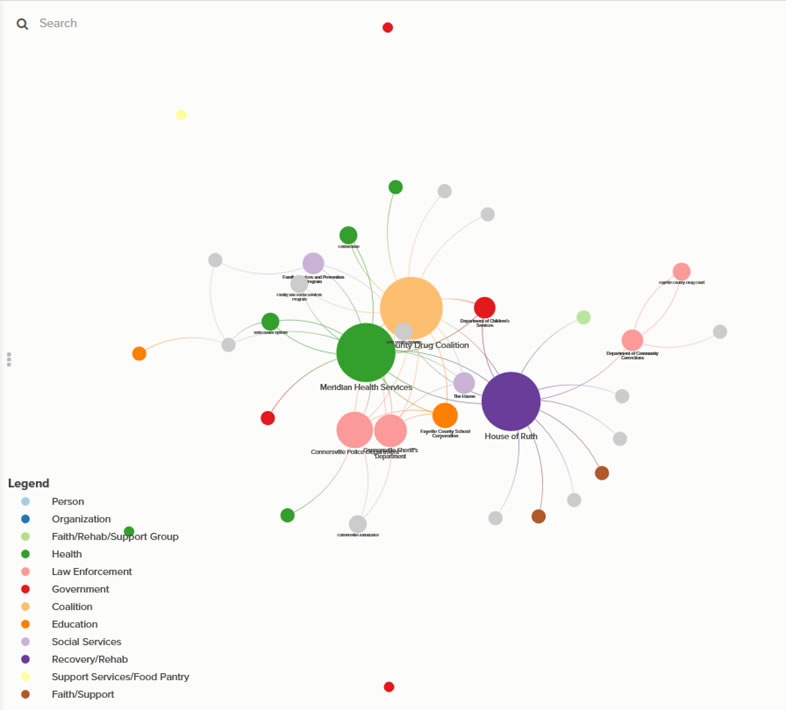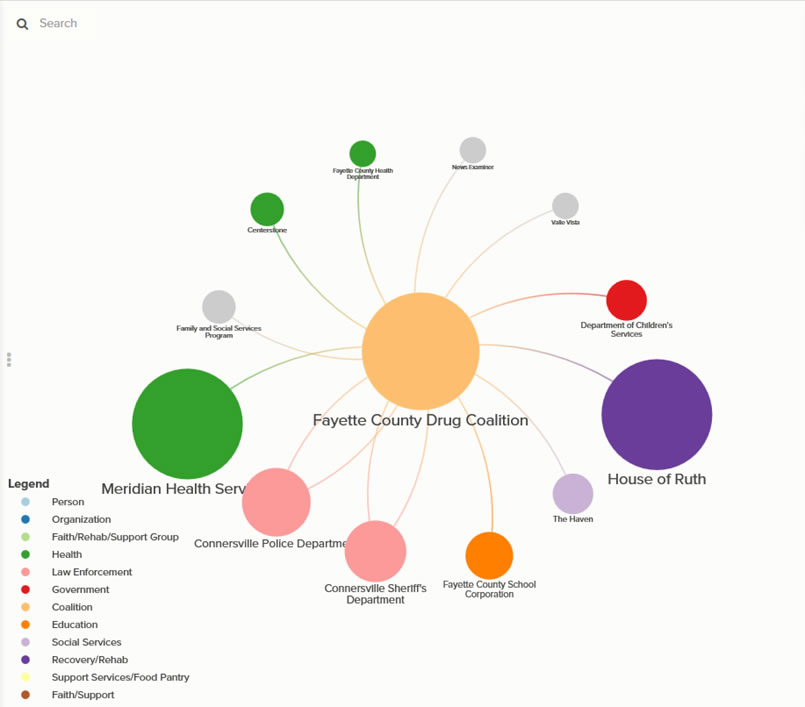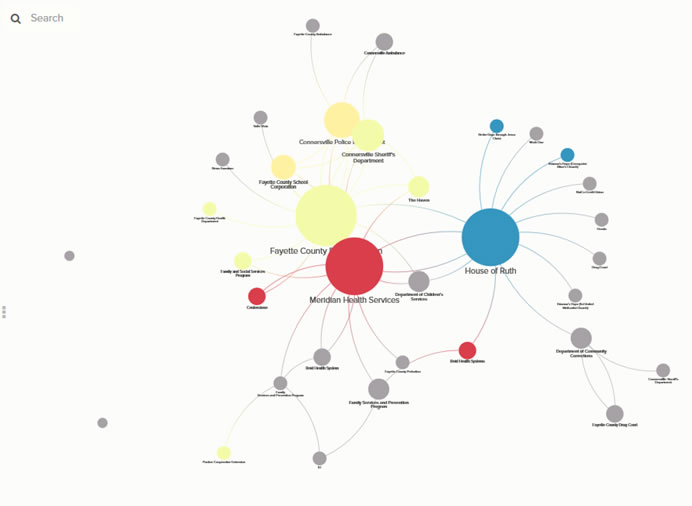IDP in action: Helping communities understand their data
By The Polis Center at IUPUI
The Indiana Data Partnership (IDP) can assist local organizations by identifying various entities working on substance use issues and their connections, to improve the continuum of care for community members. A good example of how this may work is Fayette County’s efforts.
Fayette County recently experienced the closing of its hospital, the Fayette Regional Health System. This shutdown, at least temporarily, created a void in the effort to address substance use disorders in the county with the loss of the hospital’s detox unit and harm reduction program *.
The Polis Center at IUPUI is partnering with the Fayette County Drug Coalition to facilitate the use of the IDP data to improve efforts to address the county’s substance use issues. The coalition serves as the county’s Local Coordinating Council (LCC). This makes coalition meetings an ideal venue to share and explore the IDP data. This process is in its infancy and as the first step, The Polis Center plans to share IDP data on county provider connections with the Fayette County Drug Coalition as they work on a plan in the wake of the hospital closing and its subsequent re-organization. The overall picture of healthcare providers and other organizations addressing substance use in Fayette County as of this writing are shown in the map below (Figure 1).
 Figure 1. Fayette County substance use involved organizations
Figure 1. Fayette County substance use involved organizations
While many organizations are addressing some aspect of the substance use crisis, numerous enterprises are not connected in their work. One way the IDP data is helpful is showing coalition members their individual networks and encouraging considerations as:
- Who is missing from my network?
- In what ways could we partner with other organizations?
- Which organizations can help connect us to related efforts and how?
 Fig. 2 Fayette County Drug Coalition with partner connections
Fig. 2 Fayette County Drug Coalition with partner connections
Another manner in which organizations can use IDP data is to identify the organizations working on a similar part of the substance use puzzle in the broader categories of prevention, treatment and recovery. This approach indicates which organizations are performing similar activities and where there are gaps in service.
In the slide below (Figure 3), we changed the colors to represent care categories in addressing substance use; prevention (yellow), treatment (red) and recovery (blue)**. With this data, organizations might think about:
- With which organizations should/could we connect in this category?
- For what general purposes would a partnership be helpful?
- Dissemination/sharing of information?
- Supporting others’ similar or notable activities?
- Shared efforts to increase each other’s efforts?
- Engaging in joint activities with a shared common goal and sharing or resources?
 Fig. 3 Coalition members highlighted by category of care
Fig. 3 Coalition members highlighted by category of care
Collaborative activities from prevention through treatment to recovery are critical in addressing the opioid crisis and substance use disorders. The state needs a more seamless, integrated system, as opposed to service-specific silos.
Simply collecting data and providing communities with a tool to figure out how to utilize it is inadequate. Communities may need help understanding the data and how to best use it to improve a continuum of care. The conversations with Fayette County on opioid crisis efforts are just beginning. The county is at a critical point in its response to the substance use disorders crisis with the loss of its regional hospital and its only inpatient detox unit and their harm reduction program. IDP data can help provide insights into current relationships and facilitate the creation of new partnerships.
* Reid Health has acquired Fayette Regional Health System and has started the process of re-hiring and assessing needs for the county.
** All other organizations that do not yet fit within this rubric are colored grey.
